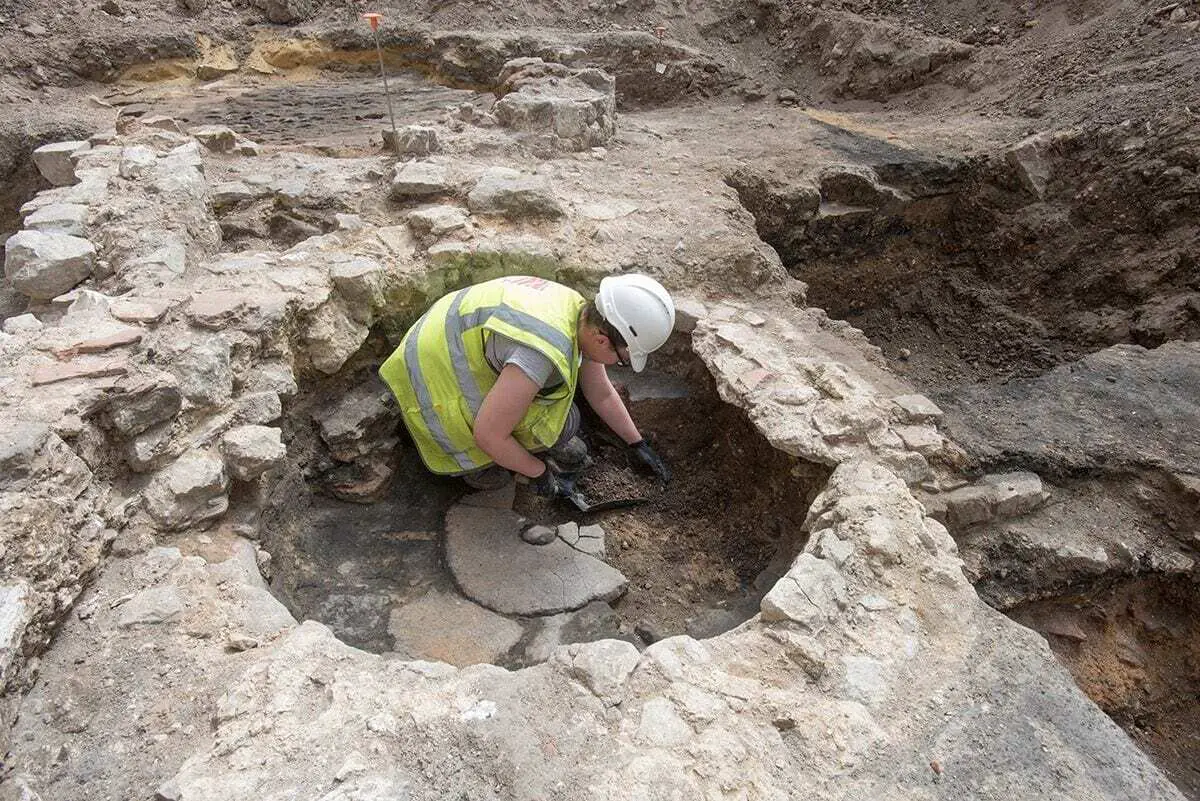Archaeologists from MOLA are conducting new excavations on the site of Shakespearean playhouse, The Theatre in preparation for a new development which will include a public exhibition space.
Visitors to the exhibition will gaze upon in-situ remains of The Theatre, where Shakespeare performed and had some of his most famous work debuted.
Shakespearean playhouses were melting pots of society and whilst the interior seating arrangements reflected the everyday class divides, theatregoers from across the social spectrum gathered outside to eat and drink and mingle before a performance. The recent archaeological excavations are exploring small pockets of these outside areas, and it is hoped that this ongoing research will reveal new insight and artefacts that will eventually be displayed in the exhibition.

Shakespeare’s plays are known to have taken four hours plus to be performed. Academics believe there were cues in his plays to keep the attention of theatregoers, with plot recaps and clues about what comes next, something evident in Hamlet. The new archaeological evidence from The Theatre indicates how Burbage was creating a Theatre Complex with enough space for audiences to mill around and socialise during these long performances.
Heather Knight, Lead Archaeologist said:
“It’s incredible to be back on site at The Theatre, it’s an internationally significant and iconic archaeological site and a really special place for archaeologists, historians, thespians and Londoners but especially for Shoreditch, London’s first theatreland. It was the discovery of The Theatre that gave Hackney its first Scheduled Ancient Monument, hopefully this dig will bring more amazing discoveries to light.”
The Theatre was built in 1576 when Shoreditch was a suburban neighbourhood on the edge of the City of London. Although at that time Shakespeare was only 12 years old, he later went on to perform there after arriving in London as a young man and have some of his most iconic plays staged there, including Romeo and Juliet. In the mid-1590’s, when Shakespeare was the resident playwright at The Theatre, he was in his late 20’s, early 30’s. In 1598, having lost the right to lease the land on which The Theatre stood, Shakespeare’s Company dismantled the playhouse. They moved the timbers across the river and used them to set up at their new location in Southwark, The Globe, which opened in 1599.

The remains of The Theatre’s inner wall were originally discovered in 2008. They form the classic polygonal playhouse structure surrounding the gravel yard where theatregoers would have gathered to watch performances. Several astonishing artefacts left behind by theatregoers, actors and proprietors provide a tangible connection to the past and a rare and exquisite opportunity to peer into the much-fantasised about experience of going to a Shakespearean playhouse. Key finds uncovered included a complete Elizabethan goblet, a unique fragment of pottery depicting a well-dressed bearded man which is the only one of its kind ever found and pieces of the money pots used to collect entry fees, evidence that playhouses were commercial entertainment venues.
These artefacts and the in-situ archaeological remains of The Theatre will be visible to the public and displayed alongside stunning 16th century objects on loan from institutions across London.
Adding to Hackney’s inimitable artistic appeal, the new space will encompass the cultural and creative forces that have been flourishing in Shoreditch for over 400 years and evoke the drama and excitement of Shakespearean theatre. By partnering with artists, sculptors, archaeologists and top museums, it’s hoped that it will be a go-to destination for dramatic events and act as an important educational resource for the local community. The remains of The Theatre, Hackney’s first Scheduled Ancient Monument, will sit at the heart of the exhibition, which will examine how and why commercial theatre culture flourished in London, and how The Theatre came to be one of the most important places in the story of Shakespeare in London.
The drama is set to continue outside of the building, where the scene is set for transformation. A beautiful art-wall evoking the tragic romance of Romeo and Juliet, two of Shakespeare’s most famous characters, has recently been unveiled by renowned street artists Global Street Art.
The plans to further echo the area’s rich theatrical past include the installation of a William Shakespeare statue, a landmark commission designed and sculpted by Raphael Maklouf and Hayley Gibb. The construction of the new building and exhibition space will be undertaken by The Box Office New Inn Broadway Limited, a subsidiary company of the Belvedere Trust.
Header Image Credit : MOLA





